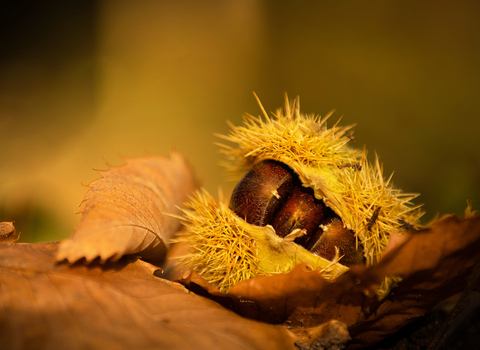
Jon Hawkins, Surrey Hills Photography

Alan Price/Gatehouse Studio

©northeastwildlife.co.uk
Sweet chestnut
The sweet chestnut is famous for its shiny brown fruits, or 'chestnuts', that are wrapped in a spiky, green casing and make a tasty winter treat. Look for this tree in woodlands in South East England.
Enw gwyddonol
Castanea sativaPryd i'w gweld
January to DecemberSpecies information
Ynghylch
The deciduous Sweet chestnut was introduced into the UK by the Romans for its nuts - often ground into flour - and widely planted for its timber; but it now behaves like a native tree, particularly in South East England where it spreads through many woodlands by seed. It can grow old and massive, the trunk twisting and developing fissures, and the branches collapsing, but often taking root and sending up new shoots. One of the largest sweet chestnut trees is in Gloucestershire, its trunk measuring nearly 13m across.Sut i'w hadnabod
The sweet chestnut has long leaves with large teeth along their edges, and soft-spined fruit cases that contain two or three chestnuts.Dosbarthiad
Mainly found in South East England.Roeddech chi yn gwybod?
Roasted chestnuts are a traditional part of Christmas dinner, as well as being sold on the streets during the winter.The Wildlife Trusts manage many woodland nature reserves sympathetically for the benefit of all kinds of wildlife. A mix of coppicing, scrub-cutting, ride maintenance and non-intervention all help woodland wildlife to thrive.
